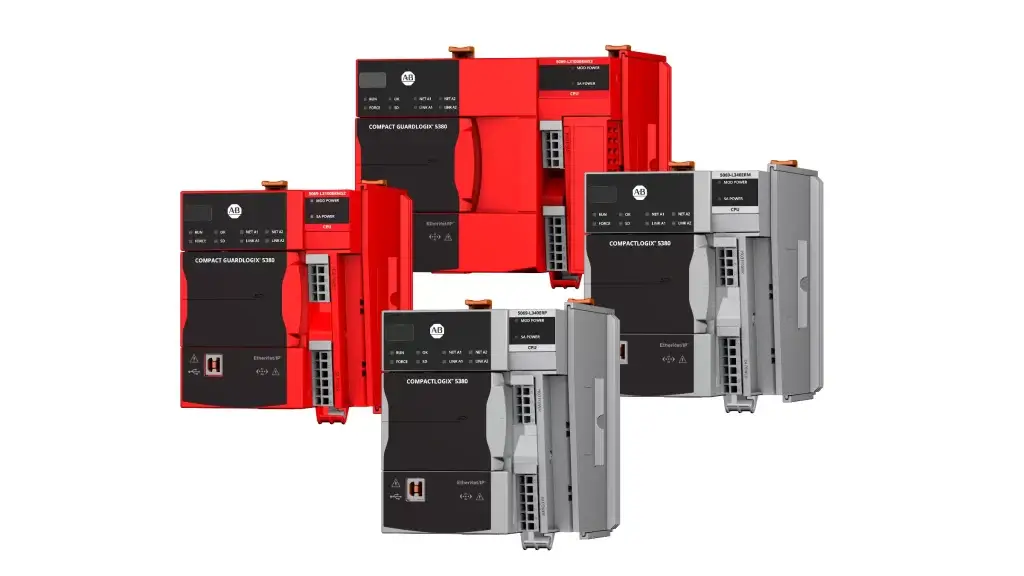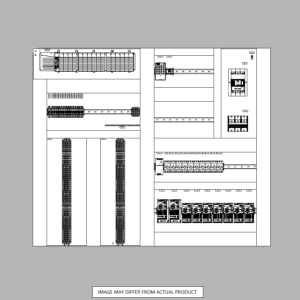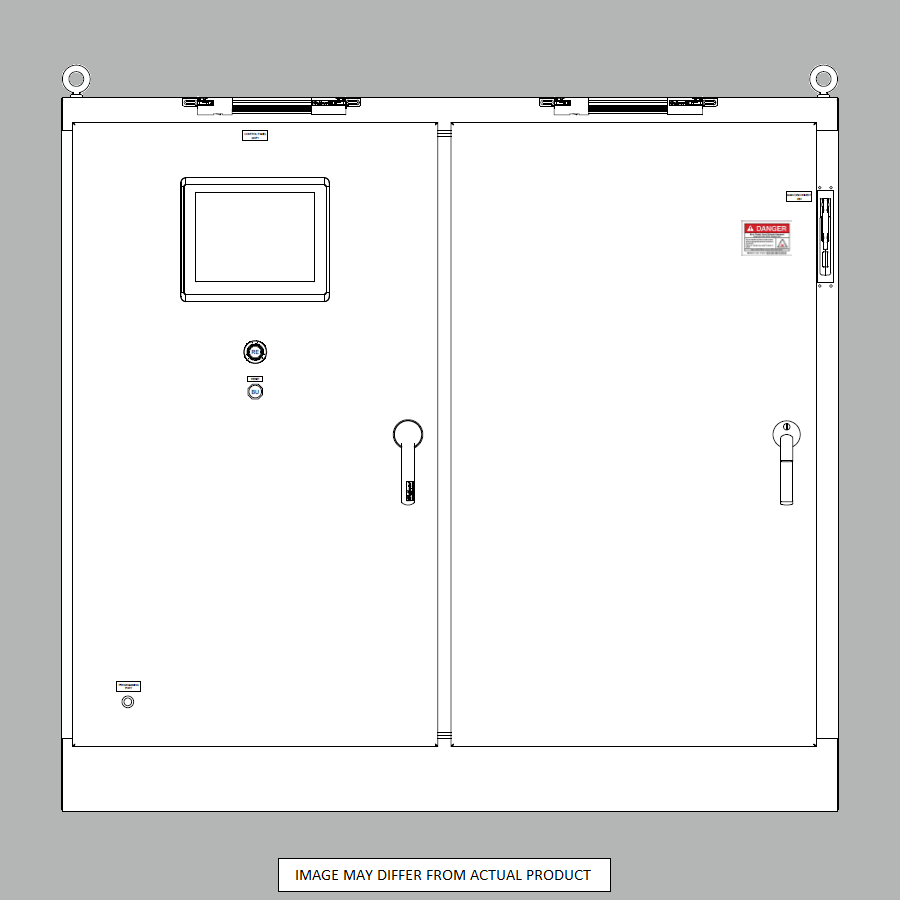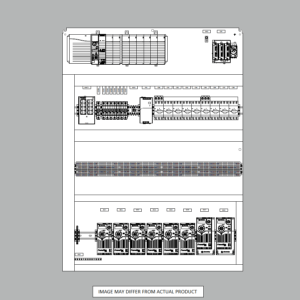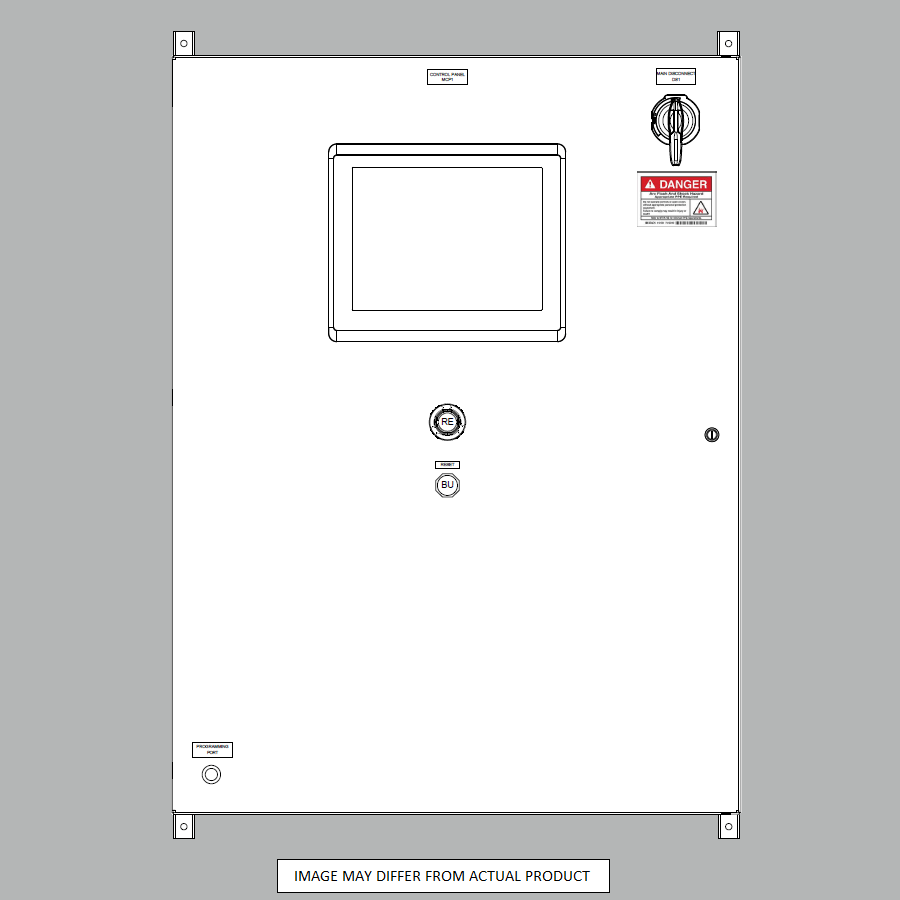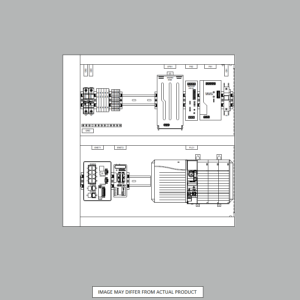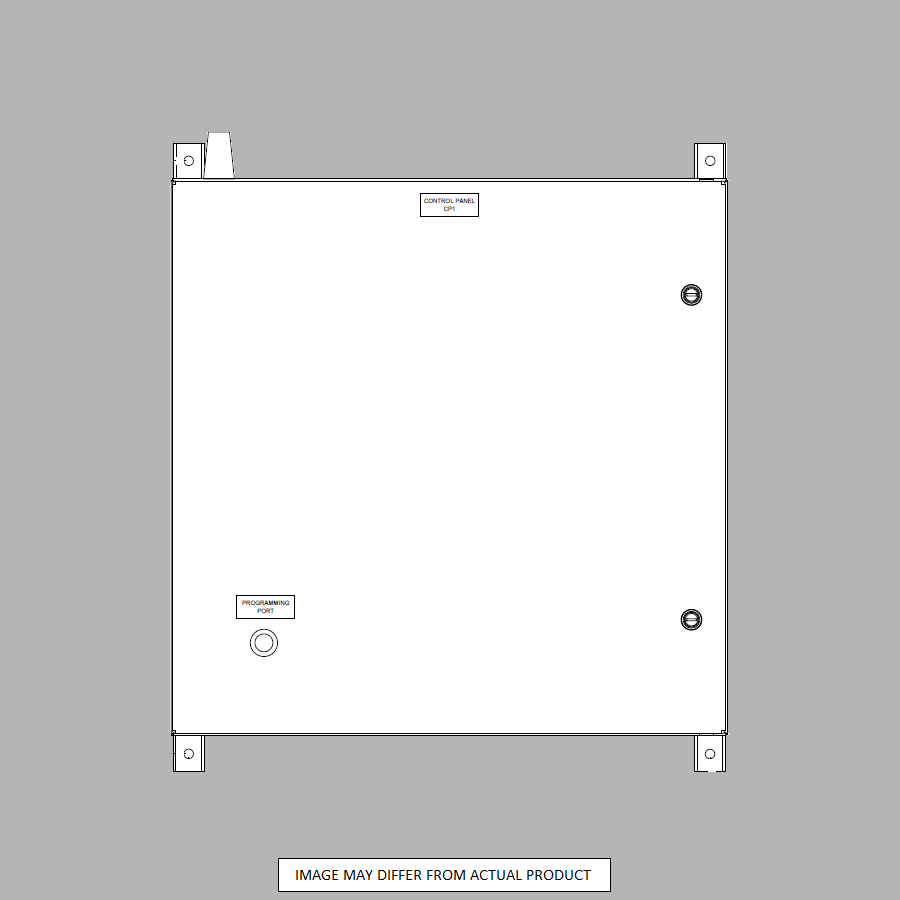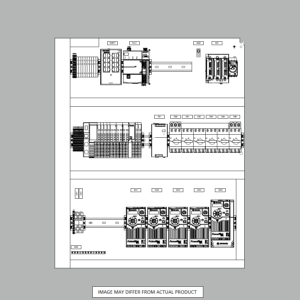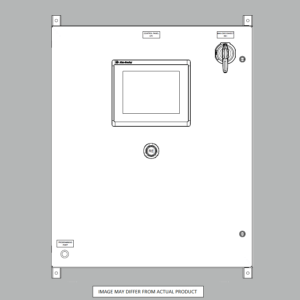A Guide to Mastering the Programmable Logic Controller (PLC)
In today’s highly automated world, Programmable Logic Controllers (PLC) are crucial in industrial control systems. These robust devices are designed to automate and regulate complex processes. These makes them essential in manufacturing, packaging, and numerous other industries. This comprehensive guide aims to provide an in-depth understanding of PLCs, their applications, and programming methodologies. This equips you with the knowledge to leverage their full potential. Take note, PLC is different from a PLC Panel.
PLCs are essentially ruggedized computers that monitor inputs from various sensors. It also execute logic-based instructions to control outputs such as actuators, valves, and motors. They offer a reliable and efficient way to automate industrial processes, ensuring consistent performance and minimizing human error. Whether you’re a seasoned professional PLC programmer or new to industrial automation, this article will serve as a valuable resource. This covers everything from PLC fundamentals to advanced programming techniques.
What is a PLC, and Why is it Important?
A Programmable Logic Controller (PLC) is a digital computer used to automate industrial processes. Such as controlling machinery on factory assembly lines. Unlike general-purpose computers, PLCs are designed to operate in harsh environments and withstand extreme temperatures, vibrations, and electrical noise. They are highly reliable and have a long operational lifespan, making them indispensable in industrial settings.
PLCs are essential for several reasons:
- Automation: PLCs are used to automate various industrial processes, reducing the need for human intervention and increasing efficiency.
- Reliability: PLCs’ rugged design and specialized hardware offer reliable operation in demanding industrial environments.
- Flexibility: PLCs can be programmed to perform a wide range of control functions, making them versatile and adaptable to different applications.
- Scalability: PLCs can be easily expanded or modified to accommodate changes in the production process or system requirements.
You’ll be better equipped to leverage their capabilities and optimize industrial processes for improved productivity and quality by understanding the fundamentals of PLCs.
How Does a PLC Work?
At the heart of a PLC lies a central processing unit (CPU) that executes a user-created program. This program is typically written in a specialized programming language, such as ladder logic, and stored in the PLC’s memory. The PLC executes the program using a continuous cycle known as the scan cycle.
The scan cycle consists of three main steps:
- Input Scan: During this step, the PLC reads the current state of input devices, such as sensors, switches, and analog signals.
- Program Scan: The PLC executes the user-created program, using the input data to make decisions and perform logical operations.
- Output Scan: Based on the program’s logic, the PLC updates the state of output devices, such as actuators, valves, and motors.
This cycle repeats continuously. Allows the PLC to monitor and respond to real-time changes, making it an ideal choice for industrial control applications.
PLC Programming Languages: Decoding the Options
PLCs can be programmed using various languages, each with strengths and applications. The most commonly used programming languages for PLCs include:
- Ladder Logic (LD): This graphical programming language is based on the traditional relay logic diagrams used in industrial control systems. It is widely adopted and considered the foundation of PLC programming.
- Structured Text (ST): A text-based programming language similar to Pascal or C, Structured Text offers more flexibility and complexity for advanced programming tasks.
- Function Block Diagram (FBD): This graphical language represents control programs as interconnected function blocks, making it suitable for complex control algorithms.
- Sequential Function Chart (SFC): Used for organizing and visualizing sequential processes, SFC combines graphical elements with structured text for programming complex control sequences.
- Instruction List (IL): A low-level programming language similar to assembly language, IL is often used for optimizing memory usage and execution speed in time-critical applications.
Understanding each programming language’s strengths and limitations will help you choose the most appropriate one for your specific application and programming requirements.
Ladder Logic: The Foundation of PLC Programming
Ladder logic is the most widely used programming language for PLCs, owing to its simplicity and intuitive nature. It is based on the concept of relay logic diagrams. Wherein each rung represents a logical condition, and the outputs are energized or de-energized based on the result of the condition.
In ladder logic, instructions are represented graphically using contacts (inputs) and coils (outputs). These elements are connected by horizontal rungs, forming a ladder-like structure. The program is rung by rung, from top to bottom, evaluating the input conditions and updating the output states accordingly.
Ladder logic programming offers several advantages, including:
- Visual Representation: The graphical nature of ladder logic makes it easy to understand and interpret, even for those without extensive programming experience.
- Familiarity: Many industrial technicians and engineers are already familiar with relay logic diagrams, making the transition to ladder logic programming more accessible.
- Troubleshooting: The visual representation of ladder logic programs simplifies troubleshooting and maintenance tasks.
While ladder logic is powerful and widely adopted, it may not be the most efficient choice for complex algorithms or data-intensive applications. Other programming languages, like Structured Text or Function Block Diagram, may be more suitable.
The Backbone of PLC Operations: Inputs and Outputs
Inputs and outputs are the primary means by which a PLC interacts with the physical world. Inputs provide the PLC with information about the state of various devices, such as sensors, switches, and analog signals. At the same time, outputs allow the PLC to control and actuate devices like motors, valves, and indicators.
There are two main types of inputs and outputs:
- Discrete Inputs and Outputs: These digital signals can only have two states, typically represented as ON or OFF, 1 or 0. Examples include push buttons, limit switches, and indicator lights.
- Analog Inputs and Outputs: These signals can have a range of continuous values and represent physical quantities like temperature, pressure, or flow rate. Analog inputs and outputs require specialized modules or cards within the PLC system.
PLCs can handle various input and output devices, making them versatile and adaptable to multiple industrial applications. Understanding the types of inputs and outputs and their wiring and configuration is crucial for effective PLC programming and control system design.
Human-Machine Interfaces (HMIs) and SCADA Systems
While PLCs are the heart of industrial control systems, they often work with Human-Machine Interfaces (HMIs) and Supervisory Control and Data Acquisition (SCADA) systems to provide a comprehensive automation solution.
Human-machine interfaces (HMIs) are graphical user interfaces that allow operators to monitor and control PLC-driven processes. They provide a visual representation of the system’s status. This enable users to view real-time data, adjust settings, and interact with the control system. HMIs can range from simple touch-screen displays to complex graphical interfaces with advanced visualization and data-logging capabilities.
SCADA Systems are centralized control and monitoring systems that oversee and coordinate multiple PLCs and other industrial automation components. SCADA systems collect data from various sources, including PLCs, and present it to operators in a unified interface. They enable remote monitoring and control, data logging, and advanced analytics, facilitating efficient management of large-scale industrial processes.
Integrating PLCs with HMIs and SCADA systems enhances operator visibility, improves decision-making, and streamlines the management of complex industrial systems. Understanding the interplay between these components is essential for designing effective and user-friendly industrial control solutions.
Industrial Internet of Things (IIoT) and PLCs: The Future of Automation
The Industrial Internet of Things (IIoT) transforms how industrial systems operate and interact. By integrating PLCs with IIoT technologies, manufacturers can unlock new levels of efficiency, productivity, and data-driven decision-making.
IIoT enables PLCs to communicate and share data with other devices and systems over secure internet connections. This connectivity allows for remote monitoring, predictive maintenance, and real-time optimization of industrial processes. PLCs can transmit data to cloud-based platforms or edge gateways, enabling advanced analytics, machine learning, and data visualization.
Combining PLCs with IIoT technologies offers several benefits:
- Remote Access and Monitoring: PLCs can be accessed and monitored from anywhere, enabling real-time adjustments and proactive maintenance.
- Data Analytics: The data collected from PLCs can be analyzed to identify patterns, optimize processes, and predict potential issues before they occur.
- Improved Efficiency: By leveraging IIoT technologies, manufacturers can streamline operations, reduce downtime, and increase overall equipment effectiveness (OEE).
- Scalability: IIoT-enabled PLC systems can easily scale to accommodate growth and integrate with new technologies and systems.
As the IIoT evolves, PLCs will enable the next generation of smart, connected, and data-driven industrial automation systems.
PLC Applications: Exploring Various Industries
PLCs are versatile and widely adopted across various industries due to their reliability, flexibility, and ability to automate complex processes. Some of the major industries that extensively use PLCs include:
- Manufacturing: PLCs are widely used in manufacturing plants to control assembly lines, packaging processes, and robotic systems, ensuring consistent product quality and efficient production.
- Automotive: In the automotive industry, PLCs are employed to automate tasks such as welding, painting, and material handling, improving productivity and reducing human error.
- Food and Beverage: PLCs play a crucial role in food processing and packaging, ensuring accurate and consistent operations while maintaining strict hygiene standards.
- Oil and Gas: PLCs control and monitor processes in oil refineries, pipeline systems, and drilling operations, ensuring safe and efficient operations.
- Water and Wastewater Treatment: PLCs automate and control various processes in water treatment facilities, such as filtration, disinfection, and distribution.
- Building Automation: PLCs control heating, ventilation, air conditioning (HVAC), lighting, and access control systems in building automation systems.
Regardless of the industry, PLCs provide a reliable and flexible solution for automating processes. This also improves efficiency, and ensuring consistent quality and safety.
Troubleshooting and Maintenance: Keeping Your PLC System Healthy
Like any complex system, PLCs require regular maintenance and troubleshooting to ensure optimal performance and minimize downtime. Effective troubleshooting and maintenance practices are essential for maximizing the lifespan and reliability of your PLC system.
Troubleshooting:
- Diagnostic Tools: PLCs often come equipped with built-in diagnostic tools or specialized software that can help identify and pinpoint issues within the system.
- Error Codes: Understanding and interpreting error codes is crucial for efficient troubleshooting and resolving issues promptly.
- Logical Approach: Adopting a logical and systematic approach to troubleshooting can help isolate and resolve problems more effectively.
Maintenance:
- Regular Inspections: Regular visual inspections of the PLC system, including wiring, connections, and physical components, can help detect potential issues before they lead to costly downtime.
- Software Updates: Keeping the PLC software and firmware up to date can ensure optimal performance, security, and compatibility with other systems.
- Environmental Monitoring: Monitoring the operating environment, including temperature, humidity, and vibration levels, can help identify potential risks and take preventive measures.
- Backup and Documentation: Regular backups of PLC programs and comprehensive documentation can facilitate easier recovery and maintenance in case of system failures or personnel changes.
By implementing effective troubleshooting and maintenance practices, you can minimize downtime, extend the lifespan of your PLC system. This ensures consistent and reliable operation.
Cybersecurity Considerations for PLC Systems
Cybersecurity has become a critical concern as industrial control systems become increasingly connected and integrated with digital technologies. At the heart of many industrial processes, PLCs are potential targets for cyber threats. This makes it essential to implement robust security measures.
Some key cybersecurity considerations for PLC systems include:
- Network Security: Implementing secure network architectures, firewalls, and virtual private networks (VPNs) can help protect PLC systems from unauthorized access and cyber-attacks.
- Access Control: Implementing strong access control measures, such as user authentication, role-based access, and activity logging, can help prevent unauthorized access to PLC systems.
- Software Updates and Patches: Regularly updating PLC software and firmware with the latest security patches and updates can help mitigate known vulnerabilities and prevent potential exploits.
- Physical Security: Ensuring physical security measures, such as restricted access to control rooms and PLC hardware, can help prevent unauthorized tampering or physical attacks.
- Backup and Recovery: Implementing robust backup and recovery strategies can help minimize cyber-attack impact and facilitate faster recovery in a security breach.
- Employee Training: Providing comprehensive cybersecurity training to employees involved in PLC operations can help raise awareness and promote best practices for secure system management.
By adopting a proactive and comprehensive approach to cybersecurity, manufacturers can protect their critical industrial control systems, and safeguard sensitive data. This also ensure the continuity and integrity of their operations.
Key Takeaways
- PLCs (Programmable Logic Controllers) are specialized computers for industrial automation, monitoring, and control.
- PLCs execute user-created programs, typically written in languages like ladder logic, to automate industrial processes.
- Ladder logic is the most widely used PLC programming language. This offers a visual representation and familiarity with relay logic diagrams.
- PLCs interact with the physical world through inputs (sensors, switches) and outputs (actuators, motors, valves).
- HMIs and SCADA systems complement PLCs, providing visualization, monitoring, and centralized control capabilities.
- The Industrial Internet of Things (IIoT) transforms PLCs, enabling remote access, data analytics, and improved efficiency.
- PLCs are versatile and widely adopted across various industries, including manufacturing, automotive, food and beverage, and building automation.
- Regular maintenance, troubleshooting, and cybersecurity measures are essential for ensuring the reliability and security of PLC systems.
By mastering the fundamentals of PLCs and staying up-to-date with the latest advancements in industrial automation, you can unlock the full potential of these powerful control systems and drive innovation in your respective industry. Get to know more about the PLCs and how our automation systems are related to it. Contact us today at Automation Ready Panels.
SHOP NOW
-
Large Process Automation: Panelview 5000, ControlLogix 5580
$21,389.00 Select options -
Small Process Automation: Panelview 5000, ControlLogix 5580
$17,999.00 Select options -
Small Process Automation: ControlLogix 5580, UPS Battery Backup, Cellular Modem
$16,999.00 Select options -
Advanced Automation: Panelview 5000, Safety CompactLogix 5380
$8,499.00 Select options

